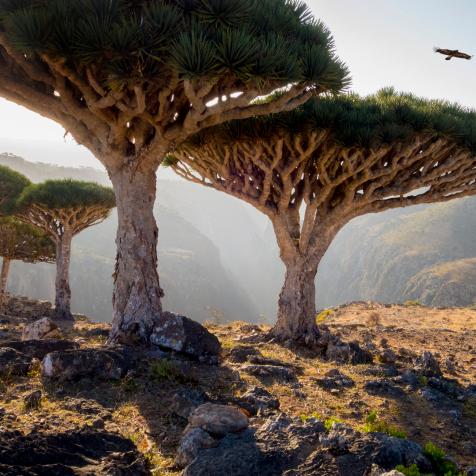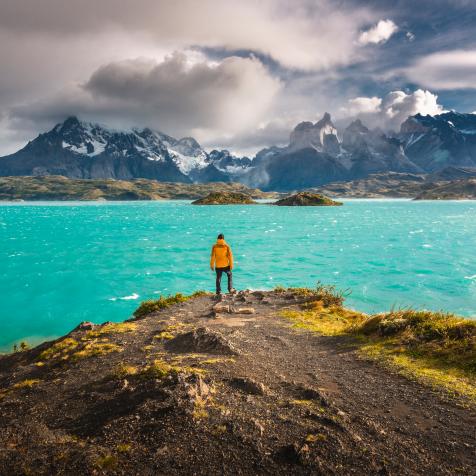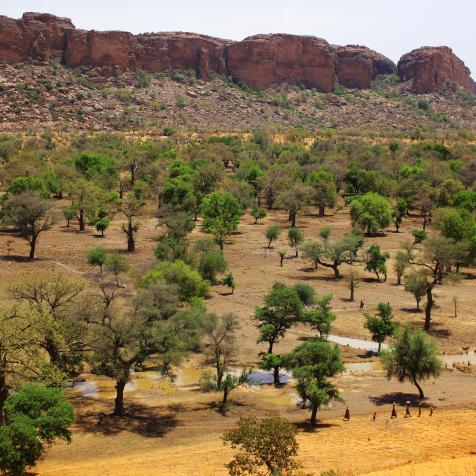
Anup Shah
This Tanzanian Lake is a Vision in Red- And You Can Visit
This picturesque lake in northern Tanzania is harsh enough to burn anything that touches it. Unless, of course, you're one of the select few species adapted to thrive in it.
Don't Be Salty
Lake Natron is a salt lake that stretches for 35 miles (56 kilometers) over the Arusha Region of northern Tanzania. Characterized by algae-rich, blood-red water and a barren landscape devoid of human development, Lake Natron is known for some less-than-attractive features. Its chemical composition, however, tops the list.
While the waters of most freshwater lakes eventually drain into the ocean, salt lakes are different. Known as endorheic lakes, these bodies of water allow precipitation to collect within them but won't allow it to flow out. That leads the water to build up high concentrations of salt and other minerals. Two well-known examples are Utah's Great Salt Lake and the Dead Sea. While Lake Natron does, in fact, fall into the same category, one specific difference sets it apart — extremely alkaline waters. With pH levels measured as high as 10.5 — almost as high as ammonia — you begin to understand why very few life forms survive in this harsh environment. But the Dead Sea doesn't have a pH anywhere near that high. How did Lake Natron get so alkaline? A nearby geological feature is largely responsible.
Up above Lake Natron, in the Rift Valley, sits the Ol Doinyo Lengai, an active volcano that spews alkali-rich natrocarbonatites. Via runoff from rainwater and nearby hot springs, these dark lava flows release natron — a mix of sodium carbonate and sodium bicarbonate once used in Egyptian mummification — that makes its way into Lake Natron below, resulting in a rising pH and some pretty fascinating biodiversity.
Some Like It Hot

Michael Poliza
Despite its ominous chemical composition, Lake Natron is actually a thriving ecosystem for a select few species adapted to its caustic waters. Extreme water temperatures of up to 140 degrees Fahrenheit promote blooms of haloarchaea, salt-loving microorganisms that give the lake its red appearance. Natron is home to only one species of fish: Alcolapia latilabris, a 2-inch (6-centimeter) cichlid that's endemic to those waters. Perhaps most memorable, however, is one unexpected and visually striking species that flocks to Lake Natron's water yearly: the lesser flamingo.
Smaller and lighter in color than their "greater" counterparts, the lesser flamingo is categorized as near threatened by the International Union for Conservation of Nature. Yet three-quarters of the world's lesser flamingos live in this region of Africa. When the water level and food availability is high, thousands of the spectacular birds use Lake Natron as their nesting grounds. The birds congregate on inaccessible islands within the shallow salt lake, forcing researchers to study them from aircraft above. It's just this inaccessibility that protects the flamingos' nests from predators like hyenas, making Lake Natron the perfect habitat for the birds.
This chemically unique ecosystem is surely one of a kind. But don't let the flourishing microorganisms and crafty flamingos fool you — Lake Natron is still one body of water you do not want to fall into.
This article first appeared on Curiosity.com.


















